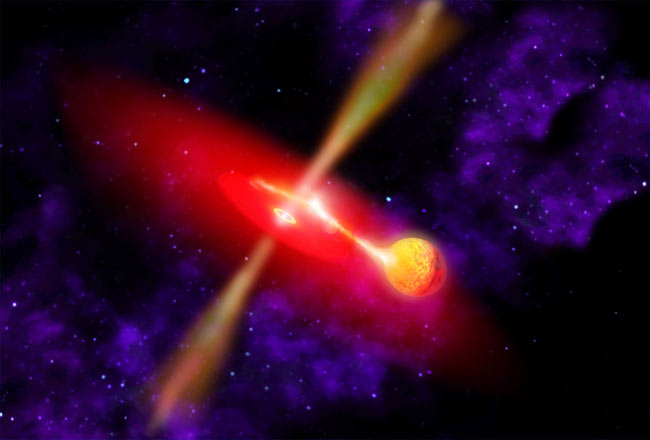New Study Finds Middle Child of Black Hole Family

Black holes usually come in either the little or bigvariety, but astronomers have found compelling new evidence that supports theexistence of a long-sought middleweight class of the deep space objects.
The "justright"-sized candidate is an X-ray source in the NGC 5408 galaxy, 15.8million light-years away from Earth in the constellation Centaurus.
"Intermediate-mass black holes contain between 100 and10,000 times the sun's mass," said Tod Strohmayer, an astrophysicist at NASA'sGoddard Space Flight Center in Greenbelt, Md. "We observe the heavyweightblack holes in the centers of galaxies and the lightweight ones orbiting starsin our own galaxy. But finding the'tweeners' remains a challenge."
The new study used the European Space Agency's orbitingXMM-Newton observatory to observe the candidate, called NGC 5408 X-1, in 2006and then again in 2008. It found further proof that the signal is a medium-sizedblack hole.
Black holes are infinitelydense objects that trap matter and even light with their gravity. Thoughastronomers can't see them directly, they detect a black hole's presence by itsgravitational pull on other objects, and by the light that's emitted whenmassive things fall into it.
NGC 5408 X-1 emits more X-rays than a typical star, but lessthan supermassive black holes, which can weigh as much as a million suns.
Strohmayer and colleague Richard Mushotzky, anastrophysicist at the University of Maryland, College Park, found that NGC 5408X-1 flickers, getting periodically brighter and dimmer over time. Scientiststhink this pattern reflects hot gas piling on to the accretion disk of matterswirling around a black hole.
Breaking space news, the latest updates on rocket launches, skywatching events and more!
The NGC 5408 X-1 signal is unique because the flickering isabout 100 times slower than that seen from stellar-mass black holes, yet thissource outshines these systems by about the same factor. That tells theresearchers it's probably amiddleweight.
"Astronomers have been studying NGC 5408 X-1 for a longtime because it is one of the best candidates for an intermediate-mass blackhole," said Philip Kaaret at the University of Iowa, who has studied theobject at radio wavelengths but is unaffiliated with the new study. "Thesenew results probe what is happening close to the black hole and add strongevidence that it is unusually massive."
The case still isn't closed on the controversial idea ofmedium-sized black holes, though. More evidence will be needed to convinceskeptics that black holes aren't all huge or small.
The research is slated to be published in a future issue ofThe Astrophysical Journal.
- Video: Chandra's Mid-Sized Black Hole
- Vote: The Strangest Things in Space
- Top 10 Star Mysteries

Clara Moskowitz is a science and space writer who joined the Space.com team in 2008 and served as Assistant Managing Editor from 2011 to 2013. Clara has a bachelor's degree in astronomy and physics from Wesleyan University, and a graduate certificate in science writing from the University of California, Santa Cruz. She covers everything from astronomy to human spaceflight and once aced a NASTAR suborbital spaceflight training program for space missions. Clara is currently Associate Editor of Scientific American. To see her latest project is, follow Clara on Twitter.
